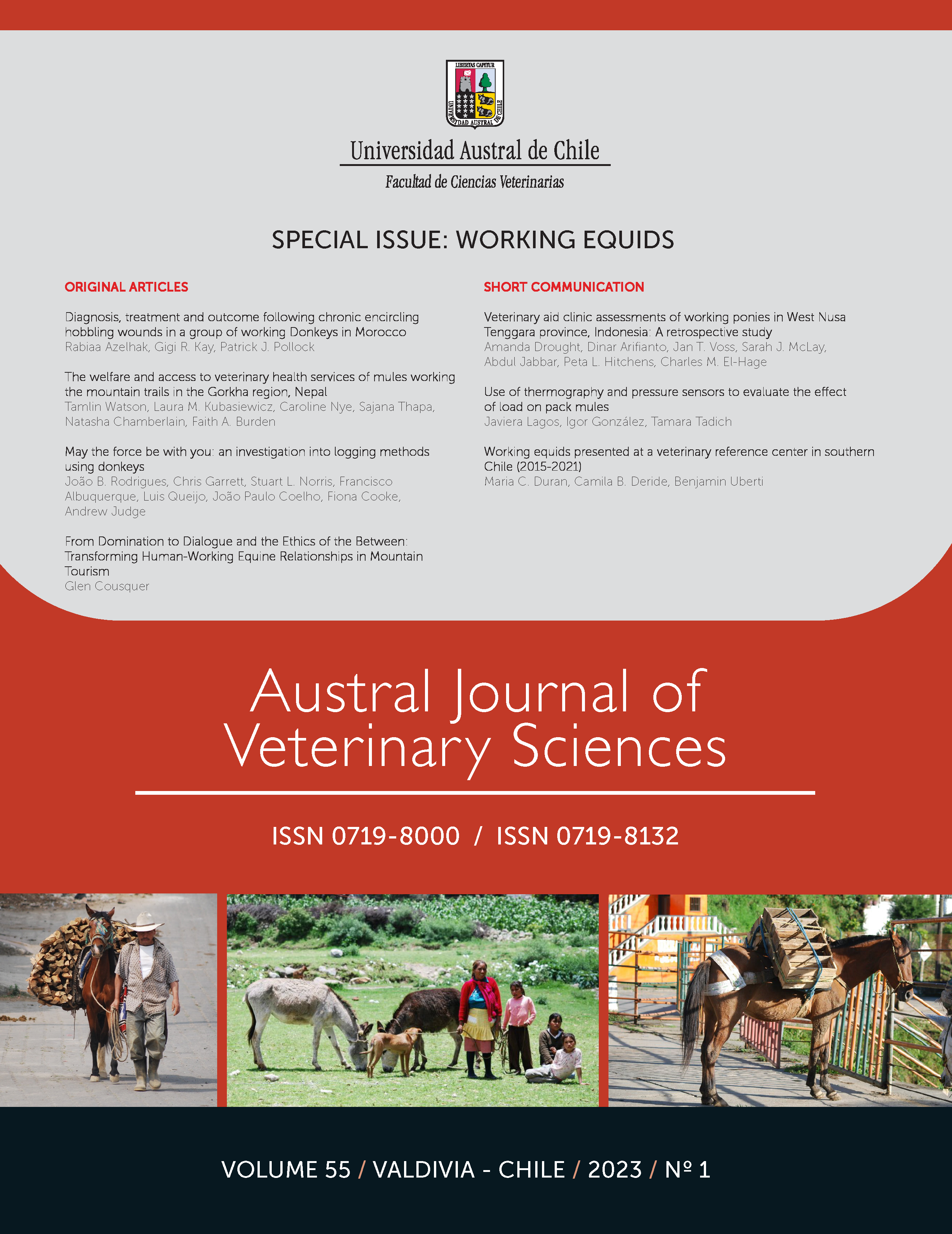Use of thermography and pressure sensors to evaluate the effect of load on pack mules
Conteúdo do artigo principal
Resumo
Mules performing pack work can develop skin wounds and lesions on harness related areas of the body, but also muscular and bone damage that are not always visible during clinical examination. Thermographic imaging and pressure sensors have emerged as non-invasive diagnostic alternatives that can provide valuable information about the welfare of working equids. The aim of this study was to assess the effect of different loads on the back of mules through thermographic images and pressure sensors. A crossover design was used with twelve mules carrying three different loads (80, 105, and 130 kg) for two kilometers. Four pressure sensors were placed in the harnessing system to assess the pressure (N) of the loads. Thermographic images of the back were taken daily before and up to five days after the harnessing work. The results show that the heavy loads (105 and 130 kg) generated a significant increase of temperature in all the analysed areas of the mules’ back, with no significant differences between anatomical areas. The pressure sensors did not reveal significant differences between treatments or between anatomical areas and no evidence of a correlation between pressure and temperature. Further studies including physiological and behavioral measures to assess the effect of different loads are required to better understand the effect on working equids welfare.

